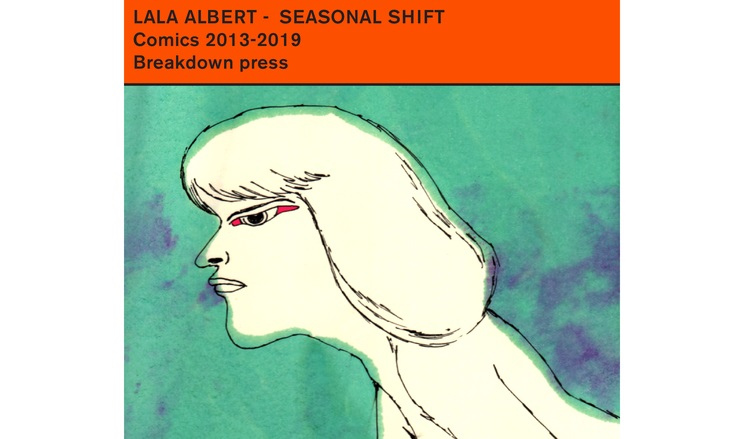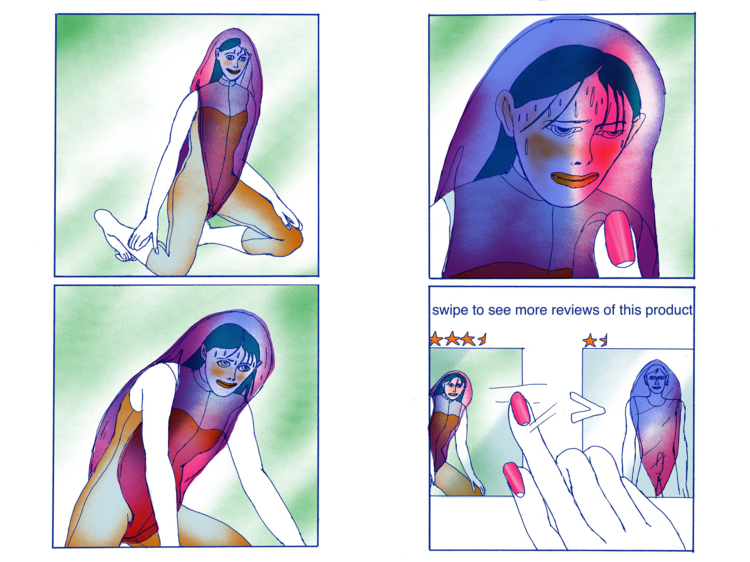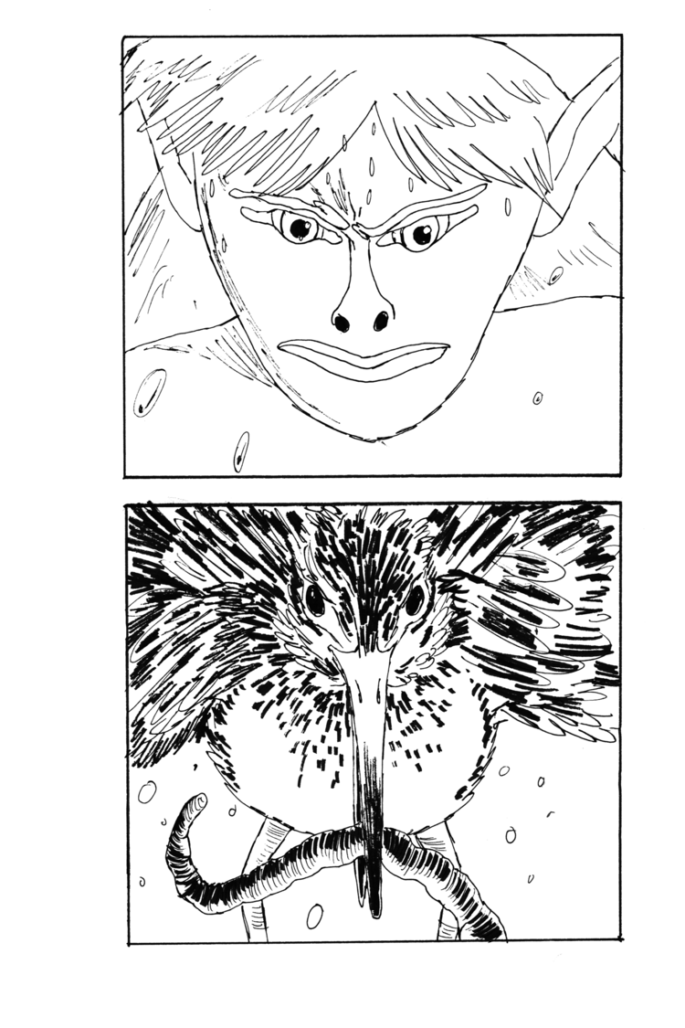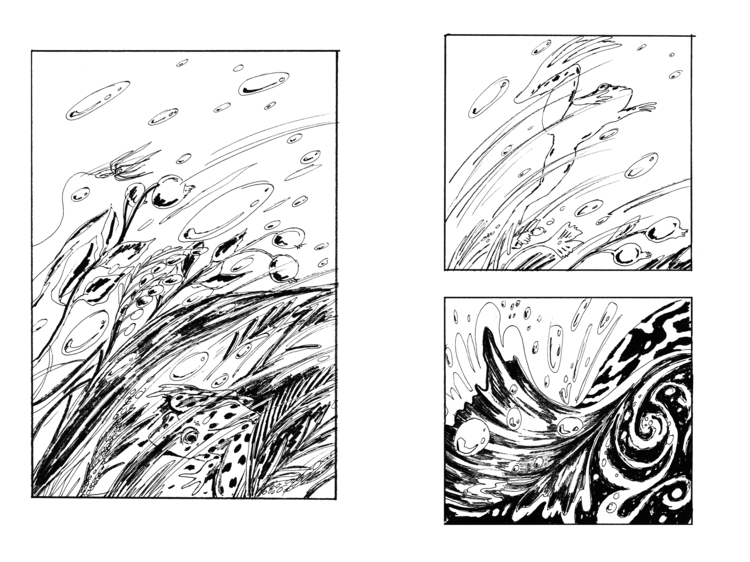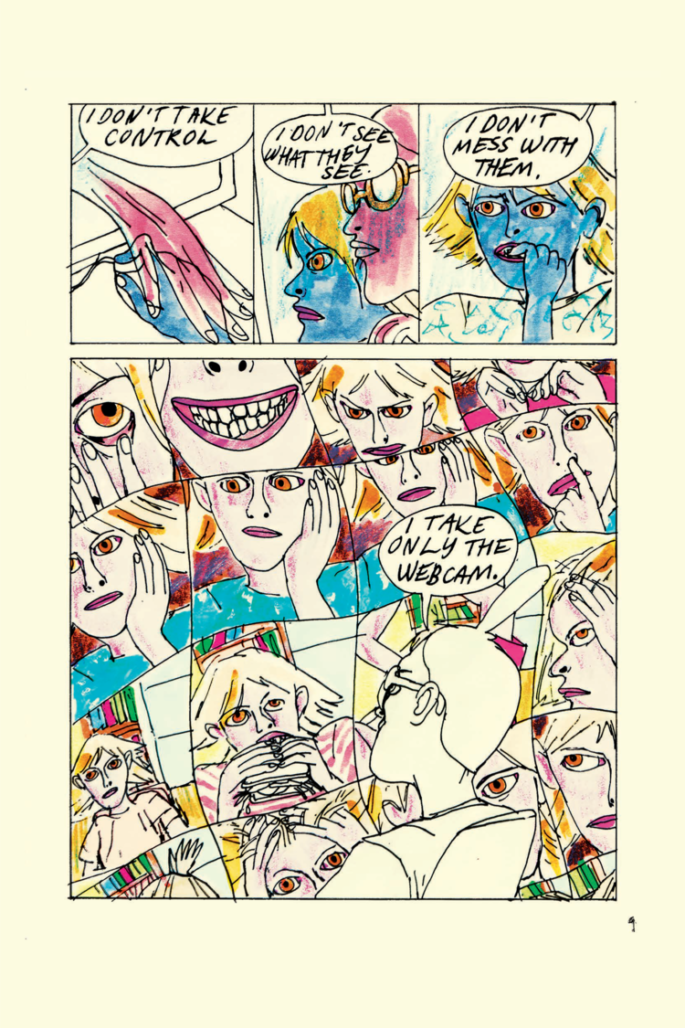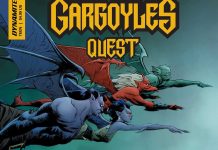The work of Lala Albert is a thing of wonder. It’s an ethereal look at nature, a dive into the nature of identity and how insubstantial it can be. Her work over the past seven years has been about variations on the way we show ourselves, in some cases how our identity is a literal masks we wear. Her lines have this unique, fluid quality to it that seems to adapt and morph her figures as she sees fit.
I originally encountered her work in her first longer form comic Janus, published by Breakdown Press in 2015. It was a fantastic reading experience and I’ve been following her work ever since. I’m really glad that Breakdown Press is now bringing us a collection of her previously published work in a wonderful 256-page book.
I’ve had the privilege to talk to Lala Albert in advance of the release of Seasonal Shift, the first collection of her work. Seasonal Shift collects several stories created between 2013 and 2019 including some of her more well-known work such as Janus, R.A.T., and Wet Earth. Readers of The Beat may remember that her comic Wet Earth was selected as one of the best comics published in 2017. We stand by that statement today.
Lala Albert discussed her work, her connection to nature, textile work, colours, genre, and bodies in this extended interview with The Beat.
Philippe Leblanc: For those readers who may not be familiar with you and your work, can you tell us a little bit about yourself?
Lala Albert: I’m an artist living and working in Brooklyn, New York. I’ve been making comics and zines for about ten years, and have been more seriously focusing on comics since 2013. I’ve self-published some zines and I’ve had comics in anthologies like Weird Magazine, Trapper Keeper, Mirror Mirror and Revue Lagon, and in one-off solo publications from Sacred Prism, Kuš!, Breakdown Press and Sonatina. I mostly focus on telling personal/inter-personal stories through a sci-fi or fantasy lens, though I wouldn’t call them genre comics. I also work in textile design for my day job.
Philippe Leblanc: You mentioned you work in textile when you’re not making comics. Can you tell us a little bit more about that?
Lala Albert: I do textile design as a day job. I’ve been doing that for 10 years in different studios, with different apparel companies in New York.
Philippe Leblanc: Do you feel that there are unique things you can take from working in textile to bring into your comics work, apart from “weaving” a narrative?
Lala Albert: Weaving a narrative may be the only thing, although working in textile has really helped me understand how to use Photoshop. This has been a really useful skill to transfer to comics. I don’t think I use the same part of my brain for those two things. I keep those two things very separate in my brain.
Philippe Leblanc: So your next comic is not something that will only be available on cotton or fabric?
Lala Albert: No, but I did do one thing printed on silk for the Mould Map exhibition a few years ago. I don’t know that that’s something I would do again, but you can see it on the Mould Map website. They have photos of the exhibition.
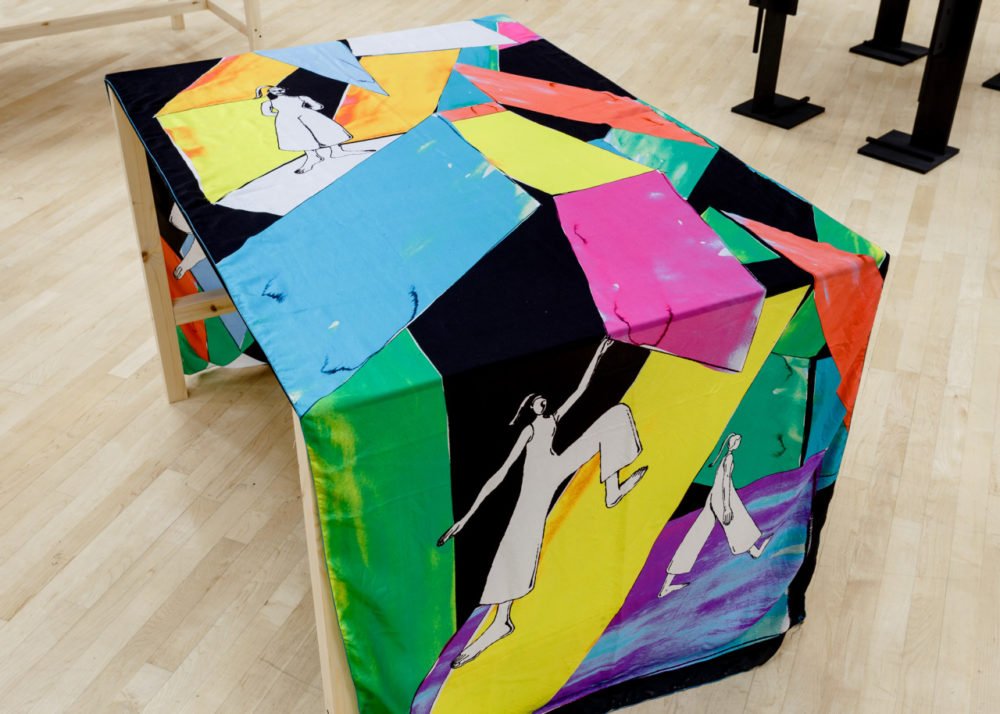
Philippe Leblanc: You mention your work often fall in the genre of sci-fi fantasy. What do you think brings you back to those particular type of genre.
Lala Albert: It’s more interesting to me than real life. It’s hard for me to fathom doing a work of fiction that doesn’t have science fiction or fantasy elements. You can change the setting, the story and I think it may be because it allows me to be very creative and not be constrained by the boundaries of real life. It’s more natural to me to than setting things in reality, I’m not sure I could do it.
Philippe Leblanc: I’ve been enjoying your work these past several years, whether it be the longer form work you’ve done, like Janus or Wet Earth, through the shorter stories like R.A.T, Starlight Local, Brain Buzz, Morning Dew and your various other contributions to anthologies. Your upcoming collection Seasonal Shift that will be published by Breakdown Press collects all of these work. How does it feel to see all of these work in a single book?
Lala Albert: It’s been an interesting process to go through all my work from the last few years. I have a tendency to hate my work when I feel like I’ve moved on from it. There were a few comics that got cut because I found them too low-quality or embarrassing to reprint. I favor the newer stuff because it feels more “me” but some of the older comics I re-read for the first time in years and was kind of surprised that I still liked them. Having it all together in one book, I was worried there would be a lot of repetition in themes or whatever but I was also surprised at how different each comic was.
Philippe Leblanc: Seasonal Shift collects your work from 2013 to 2019. Has your approach to making comics evolved since you started making comics more regularly in 2013?
Lala Albert: Yes. I am always trying out new techniques and I never really work exactly the same way from comic to comic. I’m still learning what works best for me, how to streamline my process for longer works, what kind of pens or paper I use, etc. I feel like I’m only just figuring out how to do this.
Philippe Leblanc: There are multiple aspects of your work that I find absolutely fascinating. In particular, the way your characters feel in respect to their bodies. There’s the gelatinous human and the shedding of the skin in Janus, the transformation of humans in Alien Invasion III, but also people reflecting on their appearance in Brain Buzz. What interests you in these types of stories?
Lala Albert: It’s a personal interest. I think of drawing figures in this way as an outlet for my own uneasiness with having a body, what it means to be solid or to take a certain form. That there is room for so much variation in perception, and the general impermanence in having a body…it’s a fascination for me that I will continue to explore in my work.
Philippe Leblanc: Some of your work also focused on nature. Wet Earth and Morning Dew explores the lives of small elves, essentially miniature humanoids with wings, as they live in the forest. They have to contend with the elements, shelter, food sources, love and partnership. Why did you want to explore nature using those figures? What draws you to examine the life of small animals using human-like characters?
Lala Albert: I’ve always been a fan of nature, going outside, looking under rocks and that kind of thing. I love to explore the tiny areas. With Wet Earth, my goal was to uncover a miniscule world that exists outside of humanity, to explore the daily and seasonal drama of natural spaces. I wanted to avoid personification of the animals and plants, so I had to create these humanoid fairy creatures in order to inject any kind of narrative. I really enjoyed taking on that small perspective, so I’m continuing to make work with that in mind.
Philippe Leblanc: In addition to Wet Earth and Morning Dew, you’ve also done other explorations of nature and wildlife. I’m thinking in particular of your small watercolour studies of birds. What drives you to depict nature as often as you do? Do you think being in Brooklyn, NY, a densely populated city has affected your relationship to nature?
Lala Albert: It has, I think, but mostly because it’s so easy to access natural areas in New York City. I don’t know how to drive so a lot of the major natural areas beyond the city that I might want to go to are out of reach. There are several beautiful, expansive and protected habitats within the city that I can get to by using public transit. I spend most of my time at a computer for work or while I’m making comics so the best way to counter the effects of that is to get outside. As a result of that habit I’ve become more involved in making observational art of what I’m seeing in nature. There are special things I notice when I go out that I want to capture in my art. Taking photos and making drawings, paintings and comics are the best ways I can think of to appreciate these things I love to see and experience.
Philippe Leblanc: Your lines has this constant energy and fluidity to them, particularly when you’re drawing characters. In a way, they move seamlessly and flow where they need to go. How do view the way you depict your characters and how do you determine movement in your work?
Lala Albert: I try not to plan too much so that my line will be natural and spontaneous. I hate when something looks overworked. I feel like the soul or urgency disappears from the page if I can see too much of the process.
Philippe Leblanc: I’m very interested in the way you approach colour in your work. Most of the stories that will be contained in Seasonal Shift are in black and white, but quite a few are in colours. In Future Shock and R.A.T. you use an ever-changing array of colours, while in NU Device and Janus your attention is devoted to the colours overlapping and washing over each other. How do you approach colours in your comics?
Lala Albert: Working in color makes me a little nervous, because if I have the option I tend to just use ALL the colors. I do a lot of work with color for my day job but somehow I find it difficult to carry that mindset over into making comics in color. It’s often a struggle for me, I think, because I have a hard time thinking about comics in design terms. Those very colorful comics are the result of me not being able to make up my mind on a set color scheme. For some of the more minimally colored comics, I was presented with limitations. Working with Risograph printing is a relief to me because I know I have to choose carefully, usually from a specified set of only 2-4 colors. There is a lot of trial and error involved for me to come up with the right combinations, I think of it like solving a puzzle.
Philippe Leblanc: What do you want readers to take with them once they’ve read your book?
Lala Albert: I want people to be entertained. I want people to relate to it on a personal level and have a good reading experience. I just hoped they were intrigued and that they had an enjoyable reading
You can find Lala Albert’s new book Seasonal Shift over at Breakdown Press. You can also find her on Instagram or her website, and you can buy art and comics from her online store.
Seasonal Shift will debut at Comics Art Brooklyn (CAB) on November 2. Go get yourself a copy; this book is fantastic.


